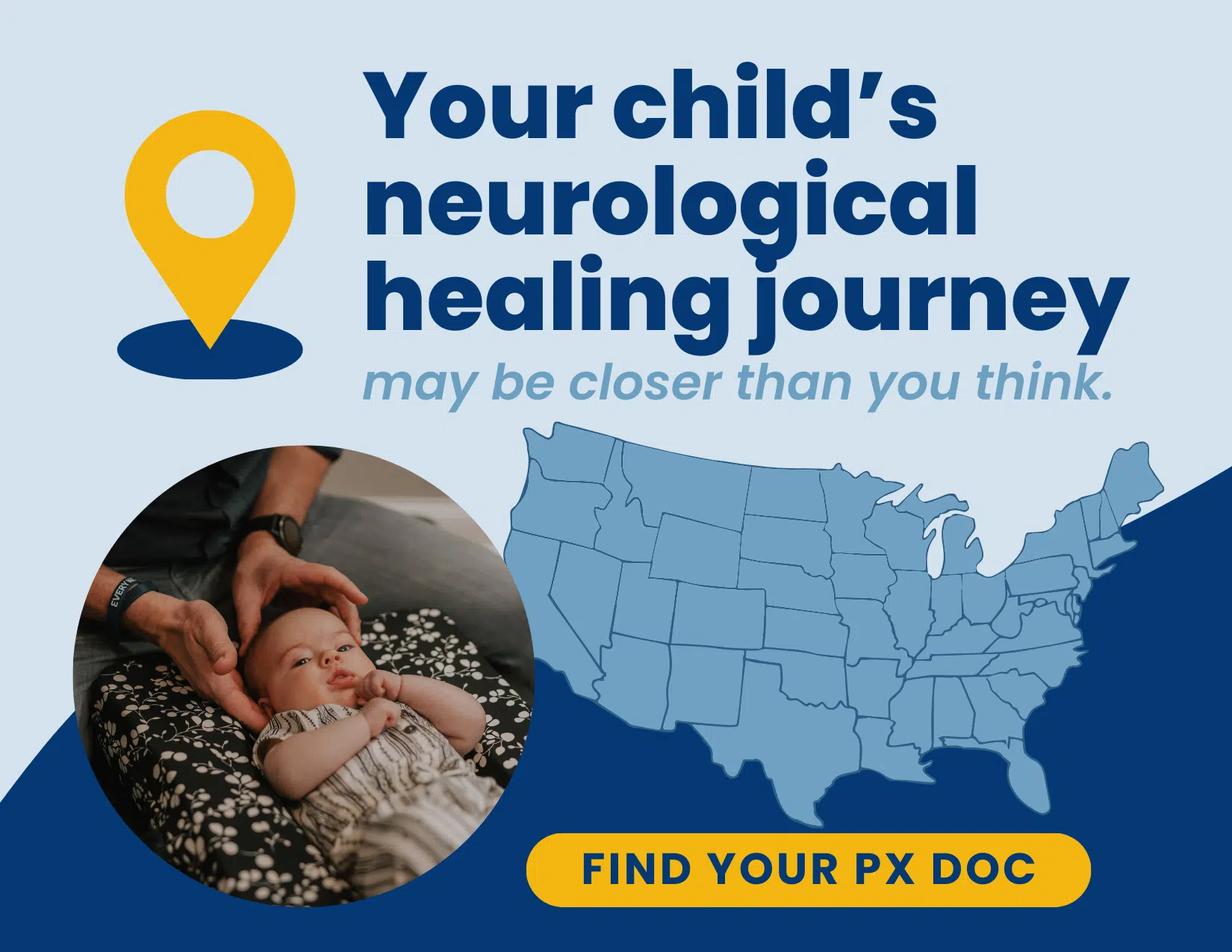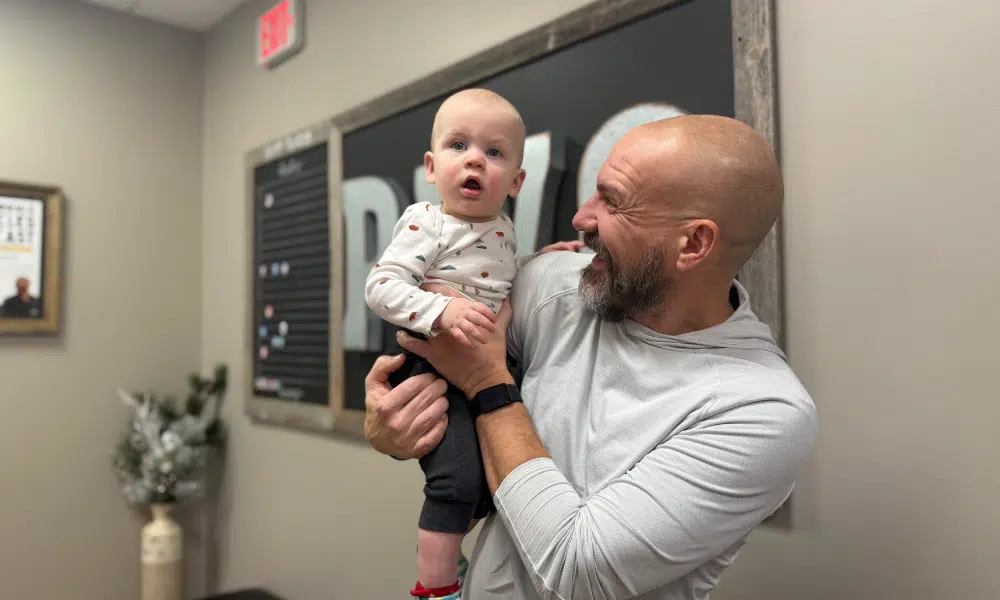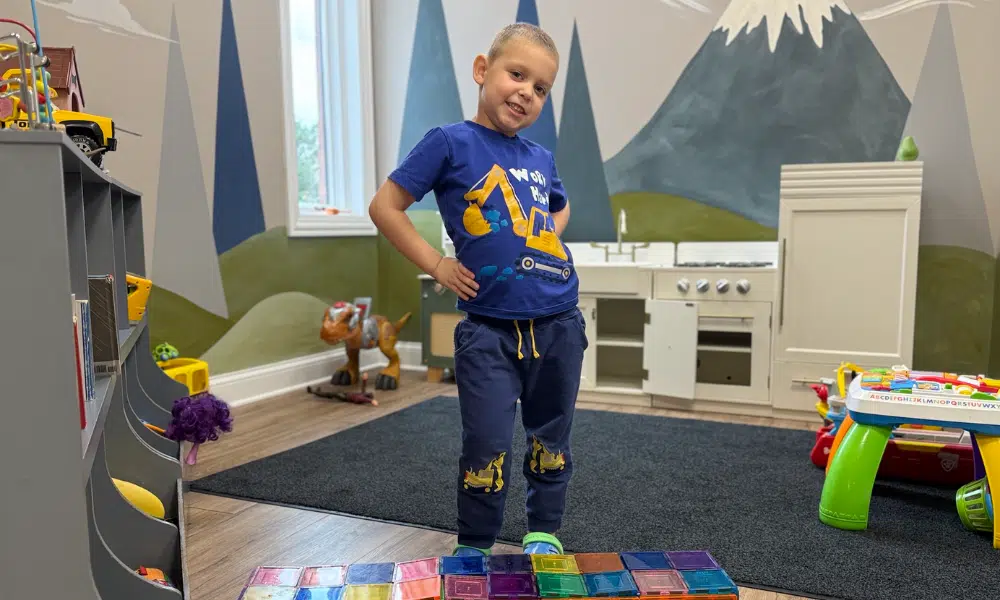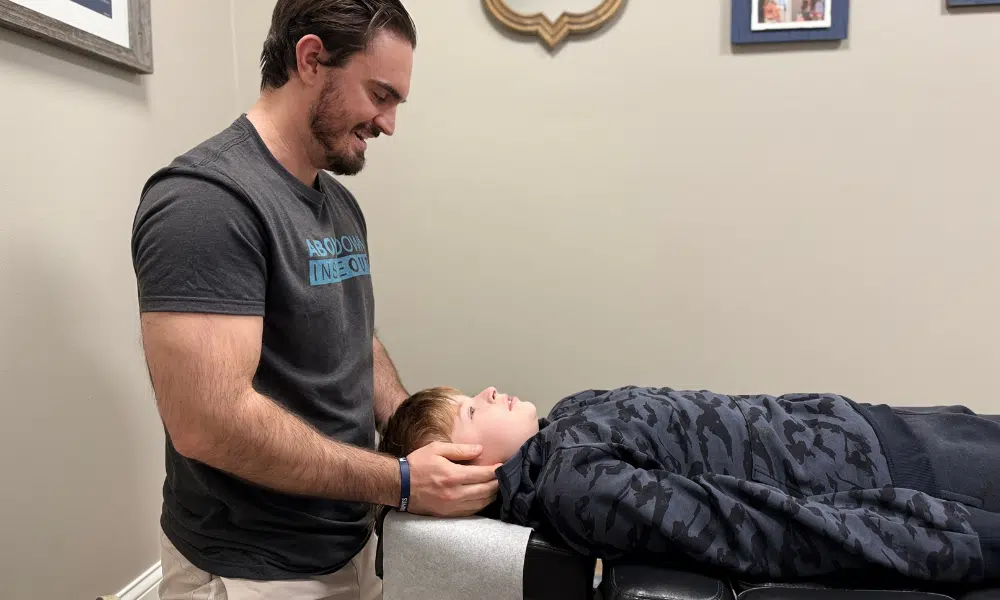Autism Spectrum Disorder (ASD) diagnoses are on the rise, with recent statistics estimating that 1 in 36 children are identified as having autism in the United States. This marks a significant increase from the year 2000, when the prevalence was estimated to be 1 in 150 children. As more families grapple with the challenges of autism, the question on many parents’ minds is: what causes this complex condition?
While genetic factors undoubtedly play a role in autism risk, the rapid increase in ASD diagnoses over the past few decades suggests that genes alone cannot fully explain the current autism epidemic. In fact, research indicates that environmental factors, including prenatal stress, birth trauma, antibiotics, air pollution, and metals, may interact with genetic vulnerabilities and give rise to autism.
In this article, we’ll dive deeper into the complex interplay between genes and environment in autism, exploring the latest scientific evidence and challenging the notion that autism is solely determined by one’s DNA. By the end of this article, you’ll have a more comprehensive understanding of the factors that contribute to autism risk and the steps you can take to support your child’s healthy development.
Understanding Autism
Autism Spectrum Disorder is a complex neurodevelopmental condition characterized by challenges in social interaction, communication, and behavior. The term “spectrum” reflects the wide variation in the type and severity of signs individuals with autism may experience.
While no two people with autism are exactly alike, there are four core areas where traits typically manifest:
- Communication deficits: children with autism may have difficulty with verbal and nonverbal communication, such as delayed language development, echoing words or phrases, or struggling to maintain a conversation.
- Social challenges: Autism can impact a person’s ability to read social cues, maintain eye contact, and understand emotions. This can make it challenging to form and maintain relationships.
- Restrictive and repetitive behaviors: These can include rigid adherence to routines, intense interest in specific topics, and repetitive behaviors and movements like hand flapping or rocking.
- Sensory processing differences: Many people with autism experience heightened or diminished sensitivity to sensory input, such as sounds, lights, or textures. This can lead to sensory-seeking or sensory-avoidant behaviors.
It’s essential to recognize that while these challenges are common among individuals with autism, the severity and presentation of traits can vary greatly from person to person. Some individuals may have mild traits that are barely noticeable, while others may require significant support in their daily lives.
Furthermore, it’s important to acknowledge that alongside these challenges, many children with autism also possess unique strengths and abilities. These may include exceptional memory, attention to detail, or creative thinking skills.
As we explore the potential causes of autism, including the role of genetic factors, it’s crucial to keep in mind the diverse nature of this condition and the importance of approaching each individual with understanding and respect.
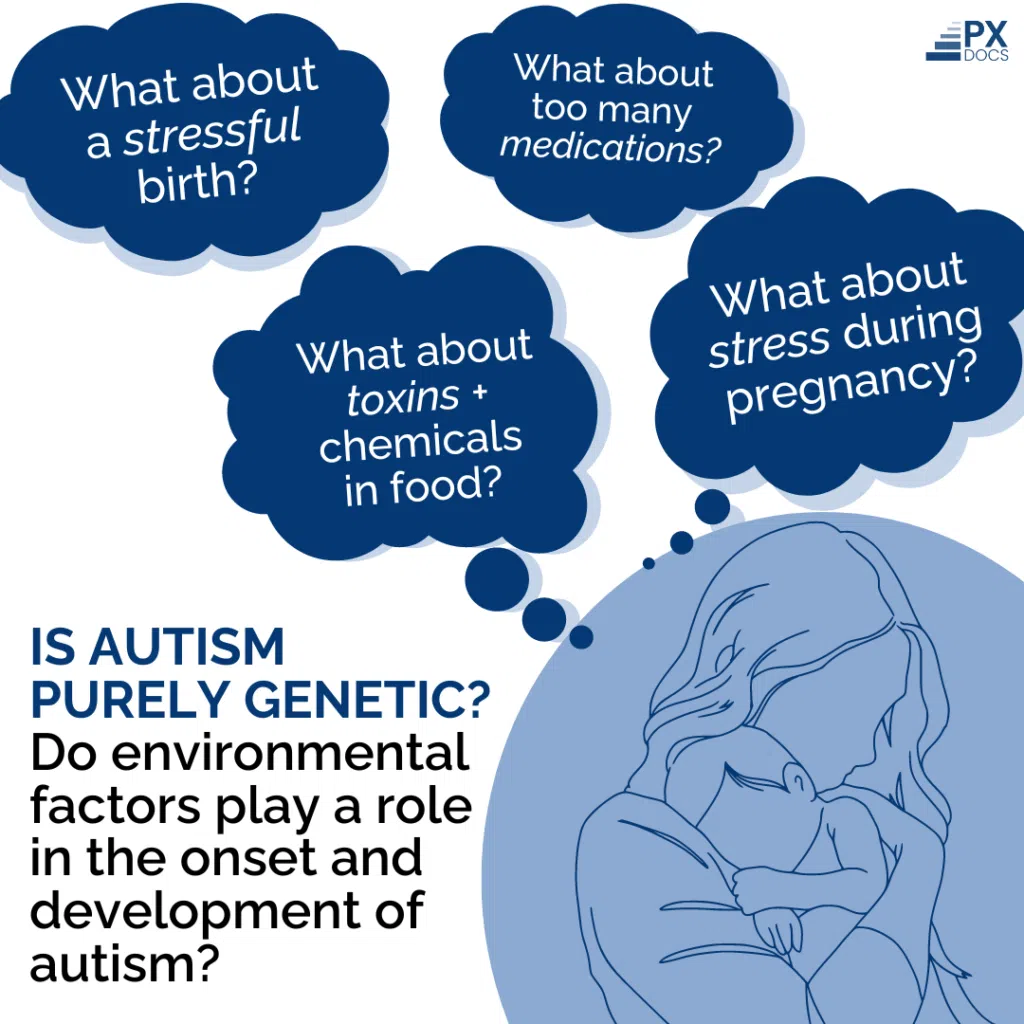
Other Common Contributing Factors in Autism Spectrum Disorder
Those four core areas of challenges associated with autism are not the only things those struggling with autism have in common. It is now well known that 50-80% of children with autism experience gut and digestive issues, 40-70% have immune system dysfunction and excessive levels of neuroinflammation, and over 80% experience sensorimotor dysfunction.
ASD and Gut Related Issues
Research suggests that 50-80% of children with Autism Spectrum Disorder (ASD) experience gut and digestive issues, such as constipation, diarrhea, bloating, food sensitivities, and irritable bowel syndrome (IBS).
Studies have found that children with ASD are significantly more likely to have gastrointestinal (GI) symptoms compared to neurotypical children. The gut-brain connection plays a major role in ASD, with research indicating differences in gut microbiome composition, increased gut permeability (“leaky gut”), and inflammation in many autistic children.
Common GI issues in children with ASD include:
- Chronic constipation (up to 50%)
- Diarrhea or loose stools (30-50%)
- Abdominal pain & bloating (50%)
- Reflux & vomiting (20-40%)
- Food intolerances & picky eating (common due to sensory sensitivities)
Gut health interventions, including dietary changes (gluten-free, casein-free, low-inflammatory diets), probiotics, digestive enzymes, and gut microbiome balancing, have shown promising results in improving both digestive function and behavioral symptoms in some children with ASD.
Immune Issues and Autism
Approximately 40-70% of children with Autism Spectrum Disorder (ASD) have immune system dysfunction. Research suggests that the immune system plays a critical role in ASD, with many autistic children exhibiting:
- Chronic Inflammation – Increased levels of pro-inflammatory cytokines and immune activation, particularly in the gut and brain.
- Autoimmune Conditions – Higher rates of autoimmune diseases (e.g., thyroid disorders, celiac disease, rheumatoid arthritis) in both autistic individuals and their families.
- Frequent Infections & Allergies – More ear infections, respiratory issues, food allergies, and eczema, indicating immune dysregulation.
- Overactive or Underactive Immunity – Some children show excessive immune responses, leading to chronic inflammation, while others have weakened immune defenses, making them more susceptible to infections.
The Gut-Immune-Brain Connection is key, as gut dysbiosis (imbalanced microbiome) is linked to both immune dysfunction and neurological symptoms in ASD. Many parents report improvements in behavior, language, and focus when addressing gut and immune health through anti-inflammatory diets, probiotics, and immune-balancing strategies.
Sensorimotor Challenges and Autism
Over 80% of autistic children experience sensorimotor difficulties, including sensory processing differences and motor coordination challenges.
- Sensory Processing Issues:
- Hypersensitivity (overresponsive) – Aversion to loud noises, bright lights, textures, or strong smells.
- Hyposensitivity (underresponsive) – Seeking intense sensory input like deep pressure, spinning, or chewing.
- Mixed Profiles – Some children fluctuate between sensory-seeking and sensory-avoiding behaviors.
- Motor Coordination and Low Tone (Hypotonia):
- Low muscle tone (hypotonia) – Common in autistic children, impacting posture, balance, and endurance.
- Gross & fine motor delays – Difficulty with activities like running, jumping, or writing.
- Dyspraxia (motor planning difficulties) – Challenges in learning new motor skills, leading to clumsiness or avoidance of physical activity.
- Vestibular and Proprioceptive Differences:
- Vestibular dysfunction (balance and movement issues).
- Poor body awareness (difficulty with spatial orientation and depth perception).
- Need for movement-based interventions like chiropractic care, sensory integration therapy, or balance exercises.
For a deep review of the rising rates of neurodivergent diagnoses, including Autism, read this article.
The Genetic Factors of Autism Spectrum Disorder
When faced with an autism diagnosis, many parents’ first question is whether autism is genetic. While it’s true that genes play a significant role in autism risk, the answer is not as simple as a straightforward “yes” or “no.”
The Complexity of Autism Genetics
One of the most important things to understand about autism genetics is that there is no single “autism gene.” Instead, research suggests that autism risk is influenced by a complex interplay of multiple genes, each contributing a small amount to the overall risk.
Furthermore, we now know that especially early in life our environment can have a lot to do with coordinating the expression of genes, via something called epigenetic influence. This means that when studies done on older children or people show certain genetic characteristics, they certainly could’ve been influenced by early life experiences and environmental triggers, versus just simply being hard-wired into the genetic code.
Put simply what the study of epigenetics teaches us is that genes are not our predetermined destiny, as was once thought and unfortunately is still mostly assumed to be true in the outdated conventional medical system. Instead our genetics have more flexibility or pliability than we ever thought, and early life experiences and environmental triggers have a lot of influence over exactly that.
This is why we focus so much on educating parents about something called “The Perfect Storm” and the early signs of autism, because we now know the latest research on autism and epigenetics shows us that we have a lot more influence and control over our children’s health and development than once thought. We’ll address the “Perfect Storm” and these early life environmental triggers more in the next few sections.
Rare Genetic Variants and Autism Risk
In recent years, advances in genetic sequencing technologies have allowed researchers to identify 69 genetic variants that are associated with increased autism risk. These variants are typically found in genes involved in brain development, synaptic function, and communication between neurons.
However, it’s important to note that even these rare variants are not guarantees of an autism diagnosis. Many individuals who carry these variants do not develop autism, and conversely, many individuals with autism do not carry any known high-risk variants.
Limitations of Current Genetic Studies
Despite the progress made in understanding the genetic basis of autism, current genetic studies have significant limitations. For example:
- Only a small percentage of autism cases (10-20%) can be attributed to a known single-gene cause.
- Genetic testing often yields results that are difficult to interpret, with many variants of unknown significance.
- The majority of autism cases are believed to result from a complex interaction of multiple environmental factors and genetic risk factors, rather than a single causative gene.
Furthermore, genes alone cannot explain the rapid increase in autism prevalence over the past few decades. While better awareness and changes in diagnostic criteria have contributed to this increase, the pace of genetic change in the population is simply too slow to account for such a dramatic rise.
This suggests that while genetic factors do play a role in autism risk, they are not the whole picture. To fully understand autism, we must also consider the complex interplay between genes and environmental factors.
The “Perfect Storm”: Interplay of Genes and Environment
While genes play a significant role in Autism Spectrum Disorder risk, they are just one piece of the puzzle. To fully understand the causes of autism, we must consider the complex interplay between genetic vulnerabilities and environmental factors—a phenomenon we call the “Perfect Storm.”
What is the “Perfect Storm” in Autism?
The “Perfect Storm” refers to the idea that autism risk is shaped by a combination of factors that converge to disrupt normal neurological development. These factors can include genetic predispositions, fertility challenges, prenatal (fetal) distress, birth complications, antibiotics, toxins, and early life experiences.
Importantly, it’s not just the presence of these factors, but also their timing and sequence that matters. Exposures during critical windows of development, when the brain is most sensitive, can have outsized effects on future risk.
Prenatal Factors and Autism Risk
The “Perfect Storm” often begins before a child is even born. Perinatal factors that have been associated with increased autism risk include:
- Fertility struggles: Research shows that women who have trouble getting pregnant may face a higher risk of having children with autism and developmental issues later on. This link is well-known in clinical practice and is often associated with infertility treatments like IVF.
- Maternal psychological distress: High levels of stress, anxiety, and depression during pregnancy have been linked to altered brain development and increased risk of neurodevelopmental challenges in offspring.
Birth Complications and Trauma
The process of childbirth itself can also contribute to the “Perfect Storm.” Birth trauma and interventions that have been associated with increased autism risk include:
- Cesarean section delivery
- Induced labor
- Breech presentation
- Fetal distress
- Hypoxia (lack of oxygen to the brain)
These factors can cause physical trauma to the delicate nervous system, setting the stage for future developmental challenges.
Postnatal Environmental Exposures
After birth, a child’s developing brain remains vulnerable to environmental factors. Postnatal exposures that have been linked to increased autism risk include:
- Infections, particularly during the first years of life
- Antibiotic use, which can disrupt the gut microbiome and alter brain development
- Exposure to toxins, such as heavy metals and pesticides
- Chronic stress or trauma
These exposures can interact with genetic vulnerabilities to further derail typical neurodevelopment.
The Cumulative Effect on Neurological Development
It’s important to recognize that no single factor causes autism. Rather, it’s the accumulation of multiple risk factors over time that can overwhelm the developing nervous system and lead to the challenges we recognize as autism.
This understanding of autism as the result of a “Perfect Storm” of genetic and environmental factors has important implications for how we approach prevention and care. By identifying and addressing these risk factors early, we may be able to support healthier neurological development and improve outcomes for children at risk.
For a deep review at the rising rates of neurodivergent diagnoses, including Autism, read this article.
Nervous System Dysfunction in Autism
As we’ve seen, the “Perfect Storm” of genetic vulnerabilities and environmental exposures can derail typical neurodevelopment, leading to the challenges we recognize as autism. But how exactly does this happen? The answer lies in understanding the critical role of the nervous system in regulating all aspects of development and function.
Subluxation: The Missing Piece of the Puzzle
Subluxation is far more than just a structural or spinal issue – it’s a neurological interference that disrupts the function, regulation, and adaptability of the nervous system. It occurs when stress, whether physical, chemical, or emotional, overwhelms the nervous system, leading to nervous system dysregulation and something called dysautonomia – a state of imbalance between the sympathetic (fight-or-flight) and parasympathetic (rest, digest, heal) nervous systems.
This early onslaught and overwhelm of the nervous system’s ability to properly adapt and develop is the cornerstone of our Perfect Storm theory. The role of these early life stressors and triggers, along with the discussion of subluxation, nervous system dysregulation, and dysautonomia are conversations that need to be at the forefront of the autism discussion, instead of just continuing to blame genetics, bad luck, and better diagnosing.
In the context of autism, subluxations can arise from the physical trauma of a difficult birth, the chronic stress of an overtaxed nervous system, or the cumulative impact of environmental exposures. These subluxations can impair sensory processing, motor coordination, gut-immune function, and social-emotional regulation—all hallmarks of Autism Spectrum Disorders.
Dysautonomia: When the Nervous System is Out of Balance
Closely related to the concept of subluxation is dysautonomia—an imbalance in the autonomic nervous system (ANS). The ANS is responsible for regulating unconscious functions like heart rate, digestion, and immune response. It consists of two branches: the sympathetic nervous system, which activates the “fight or flight” response, and the parasympathetic nervous system, which promotes “rest, regulate, and digest” functions.
In Autism Spectrum Disorder, it’s common to see an overactivation of the sympathetic nervous system and an underactivation of the parasympathetic nervous system. This can lead to a state of chronic stress and inflammation, further exacerbating developmental challenges.
Detecting Nervous System Dysfunction with INSiGHT Scans
So, how can we identify these underlying nervous system imbalances? At PX Docs, we use cutting-edge technology called INSiGHT Scans to objectively measure nervous system function.
INSiGHT Scans include:
- NeuroThermal Scans: Measure temperature differences along the neurospinal system that can indicate areas of dysautonomia and dysregulation
- NeuroSpinal EMG Scans: Assess neurosensory and motor tension, asymmetry, and disorganization
- Heart Rate Variability Scans: Evaluate the balance between the sympathetic and parasympathetic nervous systems, so overall dysautonomia
By identifying specific patterns of nervous system dysfunction, INSiGHT Scans allow our doctors to create targeted care plans to address the root cause of a child’s challenges.
The INSiGHT Scan Series above is a very classic pattern or presentation for a child with Autism Spectrum Disorder. This is a scan from a child who presented to our practice’s Perfect Storm Intensive Program, diagnosed with Regressive Level 3 Autism and presenting for care at age 5.
You can see on both the Thermal (far left) and EMG (center) scans that this child has way too much sympathetic dominance, dysregulation, and excessive disorganized energy stuck in their nervous system. Additionally, both the Thermal and EMG scans show significant subluxation and distress in the lower thoracic and lumbar regions, strongly correlated with severe gut-immune-detoxification challenges coming in autism.
Thankfully the HRV scan on the right shows that this child is still quite resilient and adaptable, meaning they were able to respond fast to Neurologically-Focused Chiropractic Care. Which is exactly what happened – this child finally began sleeping through the night, having multiple bowel movements per day (instead of 1-2 per week), stopped getting sick constantly, had much easier transitions and less sensory meltdowns, and soon after all these changes started to mount began to socialize and speak once again as well!
Caring for the Whole Child
Understanding the role of nervous system dysfunction in autism opens up new possibilities for care. Rather than focusing solely on managing symptoms like traditional medicine or targeting individual systems like biomedical care does, a Neurologically-Focused Chiropractic Care approach works to address the central and autonomic nervous system, which controls and coordinates every other system of the body.
The Impact of Neurologically-Focused Chiropractic Care
Neurologically-Focused Chiropractic Care is a non-invasive approach that aims to optimize nervous system function.The benefits of Neurologically-Focused Chiropractic Care extend far beyond the musculoskeletal system.
By improving nervous system regulation, chiropractic care can support:
- Improved sleep, rest, and regulation
- Better sensory processing and integration
- Improved motor tone, coordination, and development
- Enhanced immune and digestive function
- More balanced social and emotional regulation
- Increased overall resilience and adaptability
When combined with other supportive therapies and lifestyle changes, Neurologically-Focused Chiropractic Care can be a powerful tool in helping children with autism reach their full potential!
Embracing a New Approach to Autism
The question “Does autism run in families?” has long been at the forefront of discussions about Autism Spectrum Disorder’s causes and cures. But as we’ve seen, reality is far more complex than a simple genetic equation.
While genes do play a role in autism risk, they are just one part of a larger “Perfect Storm” that includes environmental exposures, birth trauma, and other stressors that can derail nervous system development. By shifting our focus from genetics alone to the broader interplay of factors that shape brain development, we open up new avenues for understanding and supporting children with autism.
This Neurologically-Focused Chiropractic Care offers hope to families who may have felt discouraged by the limitations of a purely genetic view of autism. It empowers parents to take proactive steps to optimize their child’s development, rather than feeling resigned to a predetermined fate.
If you suspect your child may be struggling with the neurological imbalances associated with autism, we encourage you to visit the PX Docs Directory to find a qualified pediatric chiropractor near you. Together, we can help your child unlock their full potential and embrace a brighter future.


